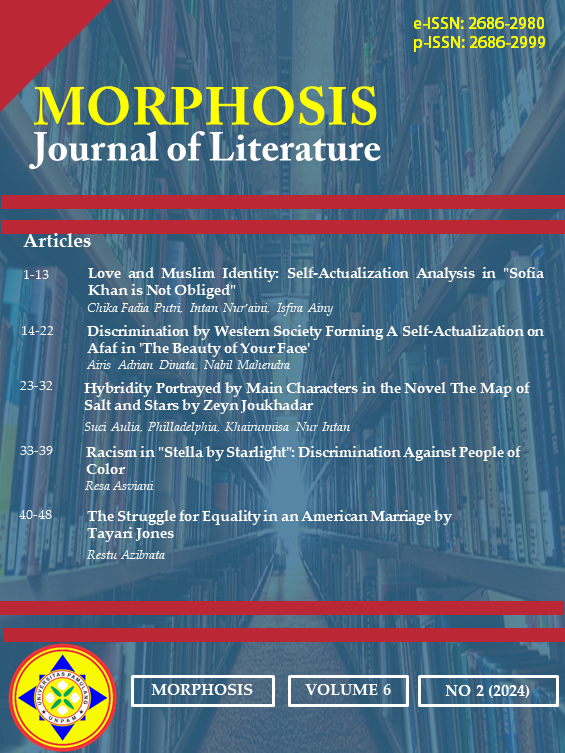Hybridity Portrayed by Main Characters in the Novel The Map of Salt and Stars by Zeyn Joukhadar
Abstract
This research is conducted to find out the traits of hybridity by the main characters in the novel The Map of Salt and Stars by Zeyn Joukhadar. This research is analysed using a postcolonial approach with the theory of hybridity by Homi K. Bhabha. According to Bhabha, hybridity is the mixing of two or more different cultures and creating a new culture that has the characteristics of both cultures. It can be said that hybridity is the result of a culture that emerges in society due to cross-cultural interactions that occur over a long period of time. Descriptive qualitative method is used in this research to analyse the problems that occur in the novel. Based on the analysis, it is found that hybridity is symbolised by the two main characters in this novel. To highlight the relationship between the past and the present, two narratives are presented, namely through Nour's story, set in contemporary Syria, and Rawiya's mediaeval background. The diasporic experience of Nour and her family depicts a character who must adapt to changing circumstances. Meanwhile, Rawiya, who is connected to Nour's story in the present, reflects Nour's defiance of expectations as a refugee in contemporary Syria. Both protagonists, Nour and Rawiya, traverse diverse landscapes, reflecting the region's mix of cultures and traditions.
Keywords: Cultural Identity, Postcolonial, Hybridity











.png)
.png)
.png)
.png)











